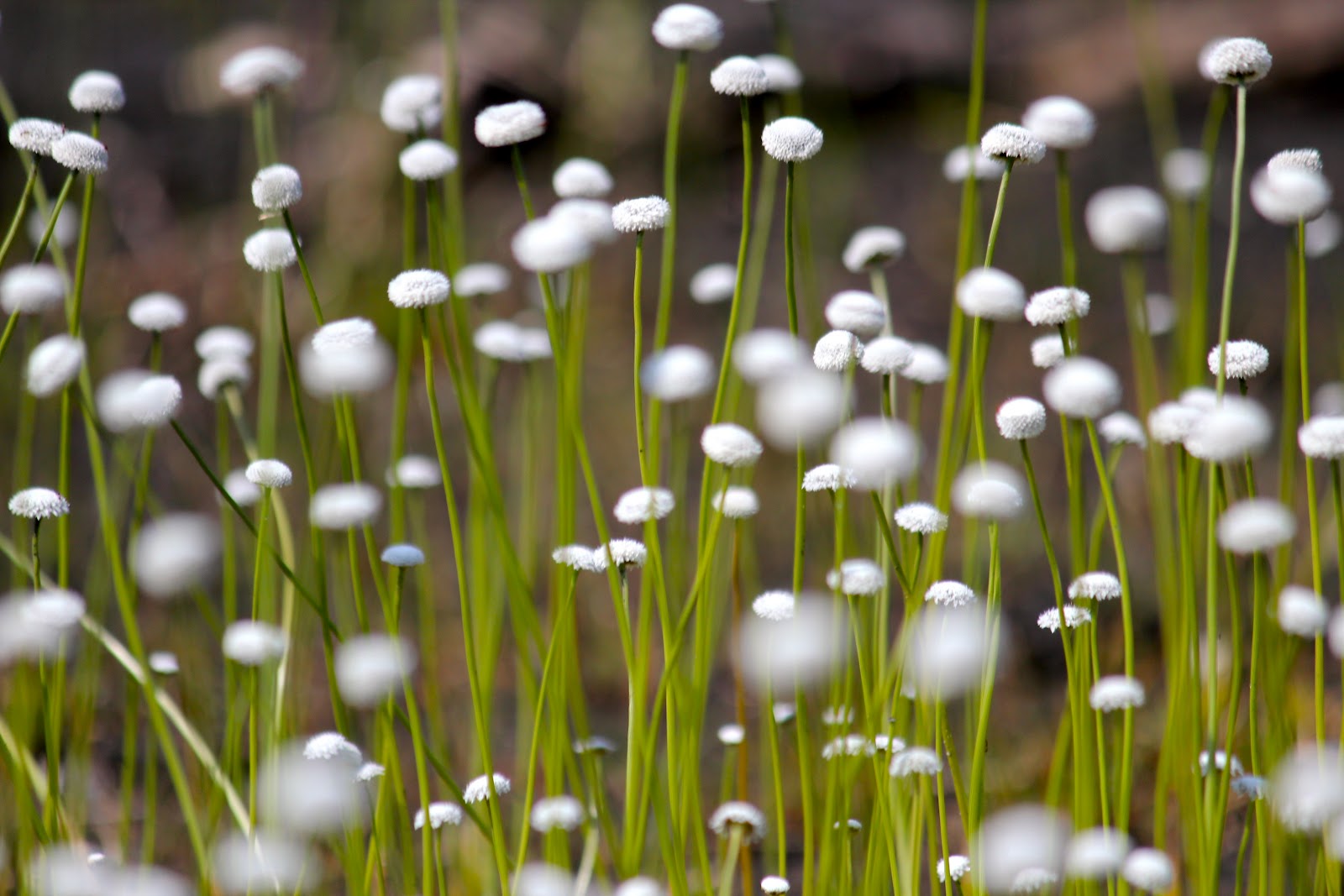Southern Bogbutton
(Lachnocaulon beyrichianum)

Description
Lachnocaulon beyrichianum , Perennial herb, forming large clumps; roots dark, thin, and branching from a thick, semi-woody rootstalk. Leaves up to - - 1- inches (1.5 - 4 cm) long, narrow, grayishgreen, hairy, with very pointed (almost folded) tips; leaf bases are solid, without air chambers. Flower stalks 6 - 9 inches (15 - 23 cm) long, twisted, hairy except near the base; base of the stalk loosely wrapped by a sheath that is shorter than, or equal in length to, the leaves. Matureflower heads less than 3 /16 inch (0.5 cm) across, round or slightly flattened, brownish- or grayish- white, tightly packed with many female and male flowers less than - inch (0.2 - 0.3 cm) long.Seeds tiny, glossy, and red-brown, appearing smooth with 10x magnification (fine ribs are visible at higher magnification). Brown bog-button (Lachnocaulon minus) also has grayish-brown heads, but its flower stalks are only 2- - 6 inches (6 - 15 cm) tall. Common bog-button (L. anceps) has larger flower heads, usually more than 3 /16 inch (0.4 - 0.7 cm) across; its flower stalks and leaves are hairier, and the seeds are finely ribbed when seen at 10x magnification; common bog-buttons prefers somewhat drier soils. Yellow pipewort (Syngonanthus flavidulus) has pale, spongy, unbranched roots and yellowish flower heads. Bog-buttons (Lachnocaulon spp.) can be distinguished from hatpins (Eriocaulon spp.) by their hairy flower stalks and leaves.
Taxonomic tree:







